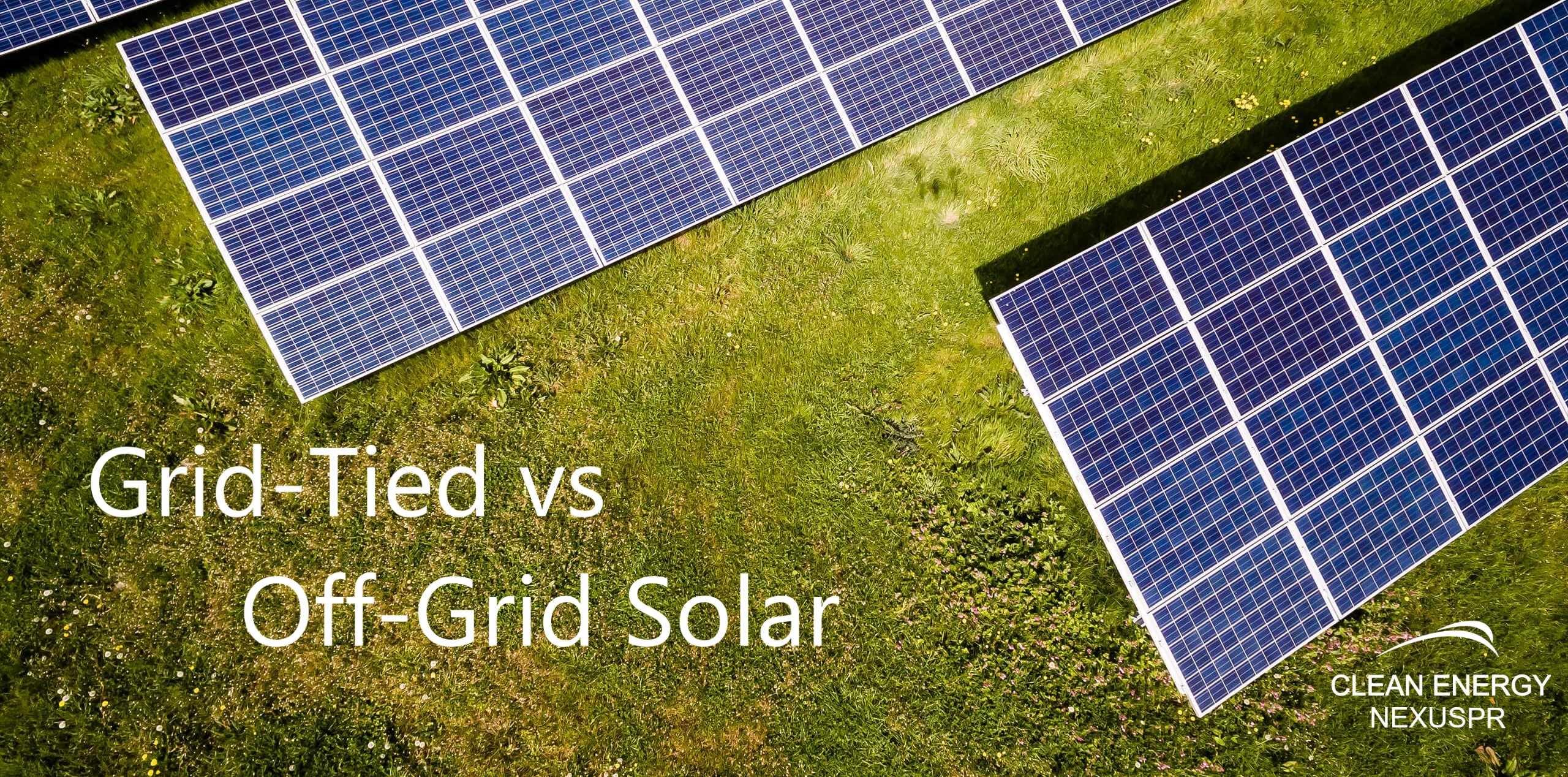One of the biggest decisions to make before building a solar power generation system is whether to choose a connect to the grid with a behind-the-meter system, or to keep the system off-grid.
We compare the two, the pros and cons of each, and explain why one party would choose one over the other in this short blog!

Let's start by defining grid.
The grid is the set of electrical wires, substations, and main power station(s) built and maintained by a local utility company. Most homes and businesses connect to it and rely on it to power their buildings with electricity, and in turn they sign contracts to pay a certain amount per kilowatt hour (kWh) of usage.
Off-grid solar power generation systems are not connected, or tied into, the local utility grid. That means if their solar system isn't producing energy and they don't have a backup system or batteries, they don't have electricity.
Grid-tied solar power generation systems do tie into the utility grid, which gives them the option to use electricity from the grid when their solar system isn't producing energy, and often also gives them the option to sell excess electricity produced by their solar system to the grid for distribution.
It may sound like it's a no-brainer to connect a solar power generation system to the grid to take advantage of the backup options they provide, but oftentimes there are reasons a party may choose to keep their solar system off-grid.
- The property the solar system is built on may be remote and difficult (and therefore expensive) to run electrical wires from the grid to.
- The grid may not be built to withstand additional voltage (could be failing, in need of replacement or upgrades) or may be built for uni-directional electricity rather than bi-directional, meaning electricity can be sent to the consumer but not the other way around.
- The party with the solar system may choose to eliminate a monthly bill by purchasing their solar system equipment up-front and maintaining it themselves.
- They may choose to reduce their carbon footprint by eliminating their reliance on the grid, which is usually powered by fossil fuels.
Reasons to connect to the grid are;
- To have the option to sell power to the local utility in the case of overproduction or periods of time when the solar system is generating power but the primary power consumer can't use it all.
- To have the option to purchase power during periods when the solar system isn't producing energy (eg. planned cleaning or maintenance, unplanned outages, etc.).
- To sell power to the utility during events when their power plant is offline (eg. after major weather events).
Both options can take advantage of adding battery storage to their solar power generation system, and both options allow parties to reduce their carbon footprint.
Grid-tied systems often have the option of allowing someone else to pay for the equipment and installation up-front through a PPA (Power Purchase Agreement), and both off-grid and grid-tied systems can usually be financed.
There are fewer parts to an off-grid solar system (see our diagram on Parts of a Solar Energy System (And Why You Should Know Them)) and much less permitting. You won't have to worry about interconnection to the grid and that will allow you to turn on the system as soon as it's built.
You may be wondering if it's possible to build a solar power energy generation system, keep it separate from the grid, and still keep the option of staying connected to the grid for backup. The answer is yes, however, an entirely separate set of electrical wires will need to run through the building you want to power to keep them separate. Usually this option is so impractical and expensive, it's really not considered as an option.
We hope this helps you understand the differences between grid-tied and off-grid solar and the benefits to both!
Photo credited to Unsplash.com
